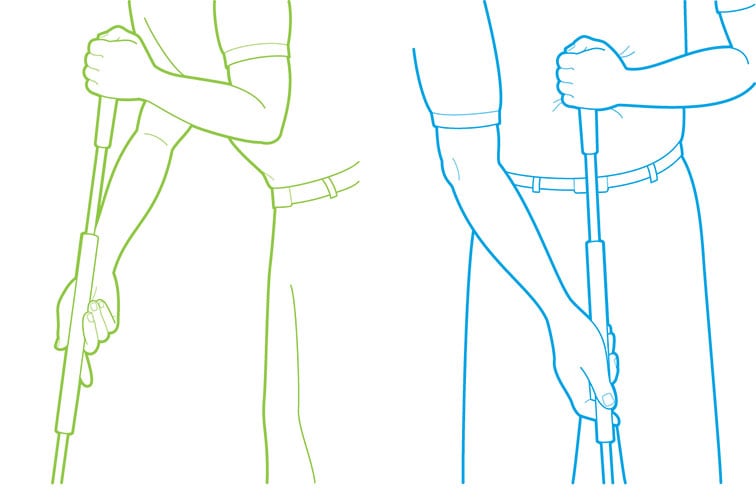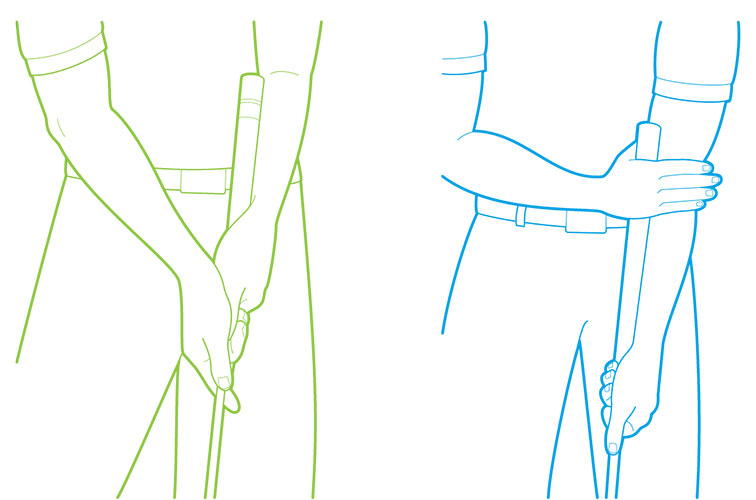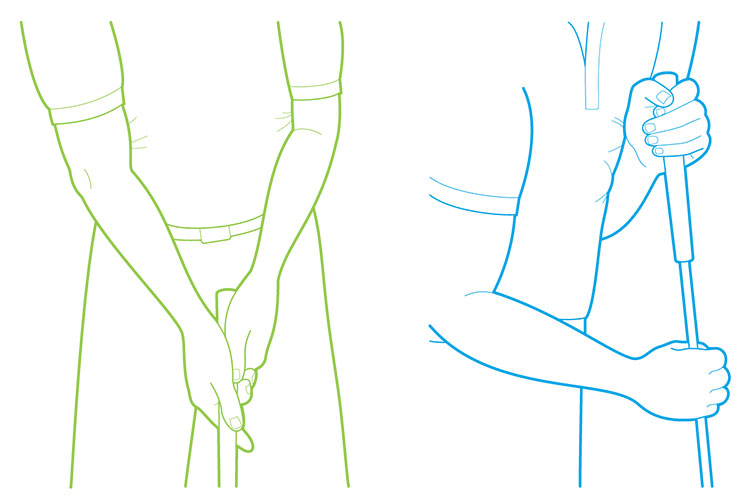A New Rule Might Change the Way You Putt In 2016
Attention to anyone using an anchored putting stroke: your time is almost up. When golf’s governing bodies – the USGA and R&A – jointly announced the ban on anchored strokes on May 21, 2013 (all anchored strokes, not just putting), the implementation date of January 1, 2016 seemed far away. Now it’s almost here. That means golfers who have become used to sticking a club against their chest, gut, chin, ear or any other body part to prevent the club from swinging unhindered are on the clock to find an alternative. This includes 2013 Masters champion Adam Scott [above], who was still anchoring his putter late in the 2015 season. Forget whether you agree with Rule 14-1b; you’re going to have to live with it. Because if you anchor, someone in your foursome is likely to object. Not to mention you’ll incur a two-shot penalty in strokeplay or loss of hole in matchplay. Why did the USGA and R&A ban anchoring? They believed it was against the spirit of a putting stroke – the club should swing freely. They also wanted to eliminate the perception that anchoring gave golfers an unfair advantage. If you want to continue to use a longer putter, that’s OK. But here are some things you need to know. If you accidentally brush the grip against a loose shirt, you’re fine. You’re penalised only if you intended to anchor the club. Going sidesaddle is also permissible. So is putting like Matt Kuchar, who braces the club against a forearm. You can do this because the club still swings without interference. Just keep in mind that if you brace your forearm against your body while putting sidesaddle or Kooch style, it’s a penalty. Still confused? Check out these examples of what you can and can’t do under the new rule. 
BELLY PUTTER
Yes [above left]
The belly putter is still permissible to use, but the shaft has to be held so the club swings freely. In this example, only the hands and wrists are touching the club.
No [above right]
Resting the butt end of the club against the stomach – the traditional method for using this type of longer putter – creates a direct “anchor point,” which is against the rules.
LONG PUTTER
Yes [above left]
Using the long putter is still legal. So is using the split-grip shown here. The key is that the shaft contacts only the hands and the lower part of the arm.
No [above right]
The popular method of placing a hand against the chest while holding the shaft with the same hand (a style favoured by Adam Scott) is considered anchoring.
FOREARM USE
Yes [above left]
It’s permissible to hold the club against the hand or forearm while making a stroke (like Matt Kuchar). The reason is that the hands and arms still swing without restriction.
No [above right]
Once the shaft is braced against an arm at or above the elbow joint, it’s directly anchored, rule-makers say.
So be careful how you hold it against your arm.
BRACING ARMS
Yes [above left]
If the forearms are resting against the body, this method is acceptable only if the hands are not separated. They can still work independently when making a stroke this way.
No [above right]
The forearm of the top-gripping hand is in contact with the body, creating an anchor point. The motion of the club is restricted similarly as if the handle were touching the body.
It’s still OK to use your long putter…
When the USGA and R&A approved the anchor ban, USGA executive director Mike Davis wanted to be clear that the proposed rule didn’t restrict the use of any currently conforming equipment. “We’re not trying to hurt the game, we’re giving you options,” Davis said in May 2013. “I say to [golfers], ‘We’re not going to take away your long putter. All you need to do is [hold the club away from your body], where you control the whole club with your hands.’ It’s almost a light-bulb moment. They look at me and say, ‘Are you serious? This would be OK?’ Yes, because if you move the club away from you, you’re controlling the whole stroke. The typical response is, ‘Oh, wow, this isn’t as bad as I thought it was going to be. I can putt this way.’ ”
— E. Michael Johnson







